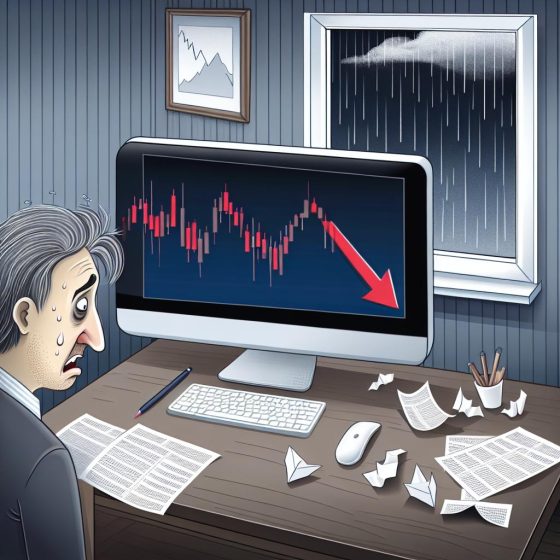The Appeal of a Big Win
The allure of a significant victory is undeniable. Whether it emerges in sports, business, or personal endeavors, winning signals success and achievement. However, the aftermath of a major win can often introduce more complexities and potential pitfalls than a loss would. This examination will explore why a substantial victory might be more dangerous than losing.
Overconfidence and Complacency
Overconfidence is a psychological effect frequently accompanying a big win. When individuals or teams secure a substantial victory, there is a tendency to overestimate capabilities. This inflated confidence can lead to complacency, where the drive for continual improvement diminishes. In turn, lack of progress might lead to stagnation.
After a significant win, these traits can subtly seep into the culture of a team or an organization. Employees and leaders alike may begin to rely too heavily on past success, creating a false sense of security. This overconfidence establishes an environment where critical assessment of performance becomes rare, leading to a gradual erosion of skills and competitive edge. Complacency reduces the urgency to improve, ultimately slowing development and innovation when compared to more vigilant competitors.
Neglecting Preparation
After experiencing significant success, the necessity to prepare thoroughly might seem less critical. The assumption that past methods will ensure future victories can be misleading. Without dedicating time to preparation, strategies may falter against new challenges or competitors who are evolving and learning.
In any competitive field, whether in sports or the corporate sector, the landscape is continuously changing. Technology evolves, competitors enhance their strategies, and market dynamics shift. Over-reliance on outdated methods, due to a deceptive assurance rooted in past success, can severely impair future performance. As the environment changes, failing to prepare adequately can leave one vulnerable to being outperformed by those who have engaged in thorough and consistent preparation, always staying ahead of the curve.
External Expectations
The expectations set by others following a big win can be daunting. Once high standards are established, maintaining them can become a source of pressure. Failure to meet these expectations might lead to increased scrutiny or criticism. This pressure often does not accompany a loss, where external parties might be more forgiving or understanding.
For organizations or individuals basking in their newfound success, this weight of expectation can result in a constant state of tension. Every future effort is analyzed under a microscope, with stakeholders such as investors, board members, or fans closely monitoring and demanding equal or greater accomplishments. The pressure to perpetually outperform past achievements can distract from genuine efforts to innovate or take calculated risks, often necessary for long-term growth and sustainability.
Resource Allocation
A substantial victory often leads to increased resources, such as financial gain or recognition. However, the sudden influx can be mishandled. Ineffective allocation can lead to unsustainable growth or investment in unsuitable areas, potentially jeopardizing future stability.
The temptation is to utilize newfound resources as indicators of success, channeling them into areas that may not offer a long-term benefit. For example, a company might invest in a high-profile marketing campaign without proper market research, or a sports team might sign expensive players without considering team dynamics. Without a strategic approach to allocate resources wisely, the initial burst of success can transform into financial burdens or miss opportunities for thoughtful, impactful investment.
Decision-Making Challenges
With victory comes the responsibility of making strategic decisions regarding newfound resources. Rushed or unwise decisions stem from a desire to build on the win quickly. Ensuring patience and strategic planning in resource allocation is crucial to guard against unforeseen downturns.
This challenge often surfaces when leaders, eager to capitalize on success, make impulsive decisions that lack comprehensive planning or analysis. Avoiding this pitfall involves taking a disciplined approach to decision-making, involving stakeholders in thoughtful conversations and considering a broad array of potential outcomes. Effective leaders take the time to reassess conditions continuously and study competitive trends, ensuring that each decision aligns with long-term objectives rather than short-term gratification.
Risk of Isolation
Success can sometimes lead to isolation, as those who experience it might distance themselves from critical feedback or dissenting opinions. This isolation can create echo chambers where only positive reinforcement is present, thus diminishing the opportunity for valuable input and constructive criticism.
The development of an echo chamber effects can shield individuals or organizations from diverse perspectives. Leaders surrounded by only agreeable voices may lose touch with realities on the ground, missing critical insights and alternative strategies. Influential feedback may be dismissed, leading to decision-making that lacks depth and foresight. The absence of challenging viewpoints halts progress and adaptation, creating blind spots in strategy and execution.
Reevaluation and Adaptation
Periodic reevaluation of strategies and goals is essential to adapt to changing circumstances. Winning can sometimes create a reluctance to alter methods, as the previous success might falsely affirm current practices. This reluctance can prevent innovation and responsiveness to new challenges.
Maintaining flexibility in strategy and the ability to pivot when necessary is critical in navigating success’s complexities. It requires acknowledging that what worked previously may not always suffice the test of future demands or different contexts. Encouraging an organizational culture that values feedback, embraces change, and prioritizes continuous learning can mitigate this risk. Adaptability and openness to change ensure efforts remain aligned with evolving trends, consumer expectations, and technological advancements.
Considering these factors, a monumental win should be approached with caution and strategic planning. Recognizing these potential pitfalls ensures that the victory becomes a stepping stone rather than a stumbling block. For deeper insights into strategies for sustainable success, consider resources such as business analysis or expert consultations.




